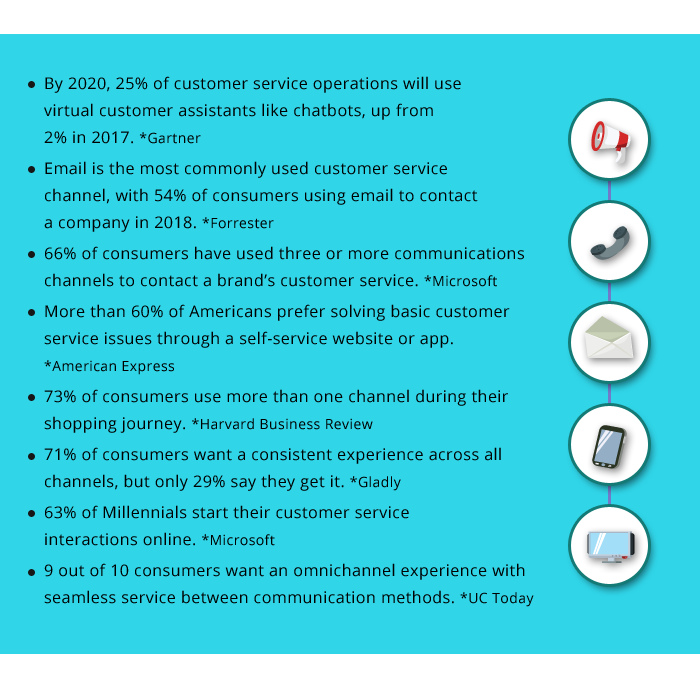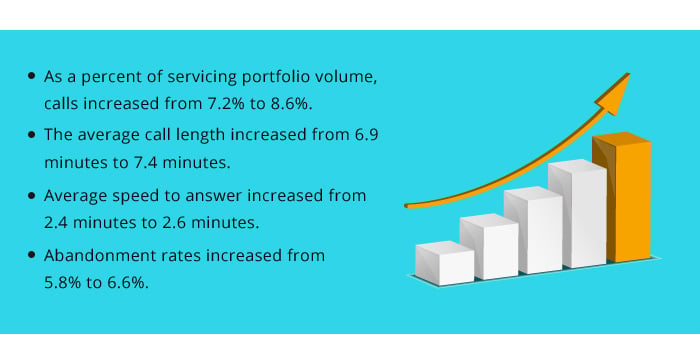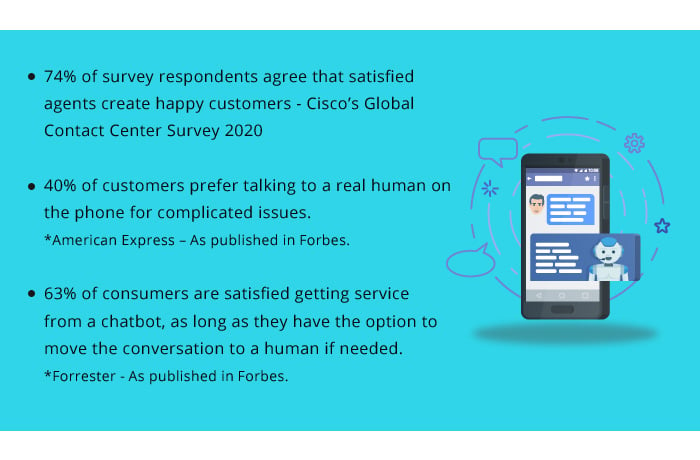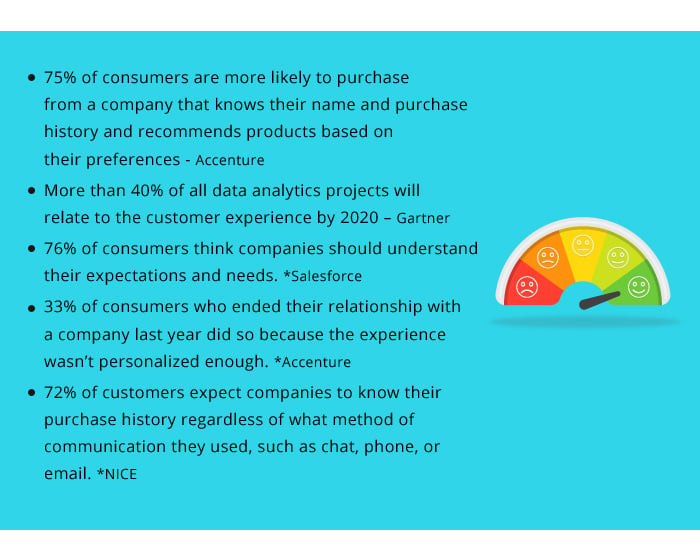The pandemic is changing our lives, and the new normal has forced us to adopt several practices that we wouldn’t have even considered earlier. One such change, of course, is Remote Work. An article in Forbes in March 2020 estimated almost six in ten American knowledge workers are working remotely, and the percentage may have gone up further since then. Every business today has employees who are operating remotely to carry out many functions, and Customer Contact Centers are no different.
Contact centers have particularly become very important as customer transaction disruptions have resulted in more customers trying to connect with businesses. Even without this additional complication, companies were already doing their best to manage their contact center operations, and now are using remote working norms, employee training, business continuity plans and other methods, all with a goal enhance customer experience while keeping costs low, and employee morale high. Here are five aspects that have emerged as absolute essentials for Customer Contact Centers:
- Omnichannel borrower experience is the key - Gone are the days when contact centers were only about ‘Calling’. We are in a time where everyone wants answers NOW. And with everyone becoming more and more tech-savvy, customers are seeking a faster resolution to their queries by using alternate mediums like email, chat, web, social media, etc. This change in customer behavior requires companies to transform their customer journey touchpoints and implement self-service options to provide a satisfying and unified customer experience. The question then is - how easily can these omnichannel contact mediums be integrated into existing company systems? And is integration even possible? Well, the answer is – You don’t need integration. There are solutions in the marketplace that can easily work with your existing systems without any integration or change – more like plug and play! Coforge’s Omnichannel contact center solution has helped several clients with its multiple self-care and multi-channel communications, and a global delivery model that’s easy to implement and can work with any legacy company systems. Forbes published an article in 2019 with statistics highlighting the need for an omnichannel contact center.

- Borrowers want more communication – The sudden increase in call center volumes indicates, among other things, that borrowers want more information and require communication to resolve their queries. One of the industries that experienced a huge surge in customer queries is the Mortgage Lending industry. Here are some statistics from the Mortgage Bankers Association's Forbearance and Call Volume Survey:
 Data published May 18, 2020. MBA's latest Forbearance and Call Volume Survey covers the period from May 4 through May 10, 2020, and represents almost 77% of the first-mortgage servicing market (38.3 million loans). Data indicates that interaction time has increased, and therefore a lower ability to support customers without an increase in capacity; this potentially can be addressed with better and more proactive customer communication. In the current environment, customers are dependent on contact centers when looking for answers to their queries/requests. Contact centers, therefore, need to implement best practices to provide quicker customer support and an improved First Call Resolution. It is time companies identified innovative ways to ensure fast and efficient customer experiences – using tools like Intelligent Contact Routing, Interactive Voice Response, Voice recognition and back it up with quality monitoring
Data published May 18, 2020. MBA's latest Forbearance and Call Volume Survey covers the period from May 4 through May 10, 2020, and represents almost 77% of the first-mortgage servicing market (38.3 million loans). Data indicates that interaction time has increased, and therefore a lower ability to support customers without an increase in capacity; this potentially can be addressed with better and more proactive customer communication. In the current environment, customers are dependent on contact centers when looking for answers to their queries/requests. Contact centers, therefore, need to implement best practices to provide quicker customer support and an improved First Call Resolution. It is time companies identified innovative ways to ensure fast and efficient customer experiences – using tools like Intelligent Contact Routing, Interactive Voice Response, Voice recognition and back it up with quality monitoring
- The need for Subject Matter Experts in supporting Contact Centers - The complexity of customer queries that agents need to handle is also rising, as basic issues may get resolved using self-service options or Google search. And if agents are working remotely, it may become even more challenging to resolve queries quickly and in the first interaction. And may result in sub-optimal resolution, increased wait-time, and even call abandonment. Cisco’s Global Contact Center Survey 2020 found that 70% of survey respondents felt that poor communication within organizations is a significant problem in their contact centers. The potential solution could be to have trained Subject Matter Experts available for calls about complex problems. This can be achieved through a Unified Contact Center framework that works seamlessly across various business units in the organization…something we have implemented in our contact center solution.
- Data and Analytics is the game changer – Many experts feels that analytics will define the next version of Contact Centers. Due to availability of technology that allows for information to be easily available, customers today are very demanding and have high expectations. When a customer associates with a brand, they may assume that the organization, in general, is aware of the relationship, their choices, their challenges, their needs, and so on. A personalized experience is key here, as this becomes a great way to increase the customers’ engagement. That’s where companies need data and analytics. An article published in Forbes in 2019, demonstrated some interesting relevant statistics:
 Given the increasing use of social media channels in addition to calling (sometimes referred to as multichannel or omnichannel communication), companies must track, report, and analyze data at every customer level to deliver a more intelligent and data-driven customer experience. This makes it possible for organizations to link analytical insights to actions and drive three important benefits:
Given the increasing use of social media channels in addition to calling (sometimes referred to as multichannel or omnichannel communication), companies must track, report, and analyze data at every customer level to deliver a more intelligent and data-driven customer experience. This makes it possible for organizations to link analytical insights to actions and drive three important benefits:
- Tailor a customer’s experience
- Identify problem areas within processes quickly and remediate them
- Increase cross-sell opportunities by making recommendations based on preference
Speech Analytics, Text Analytics, Predictive Analytics, Self Service Analytics, Call Center Desktop Analytics, and Cross Channel Analytics are some common types of analytics used in the industry. Coforge BPS’s contact center has helped customers with data analytics to take the traditional contact center to the next level.
- The increasing need for information security and data privacy – The tremendous increase in remote working is putting a lot of strain on IT and security teams. In Cisco’s Global Contact Center Survey 2020, 70% of survey respondents picked security and privacy as their number one challenge. The recent disruptions were an eye-opener for many organizations as they had to react, rather than have prepared for such a scenario proactively. Everyone is even more aware now that best-in-class security protocols must be in place to prevent threats from information leakage and application security vulnerabilities.
Coforge’s omnichannel customer contact center is designed to adapt to the changing industry trends and business needs. Driven by intelligent business process management, data and analytics, skilled professionals, and customizable omnichannel services, our contact center can help organizations deliver unparalleled customer experience & quick support, mitigate risk and improve the bottom line. With state-of-the-art infrastructure across global locations including the Philippines, we support clients across multiple geographies and industries. Our solution is easy to implement and can work with existing client systems. To know more about our capabilities Omnichannel contact center solution, email us at CoforgeBPS@coforge.com